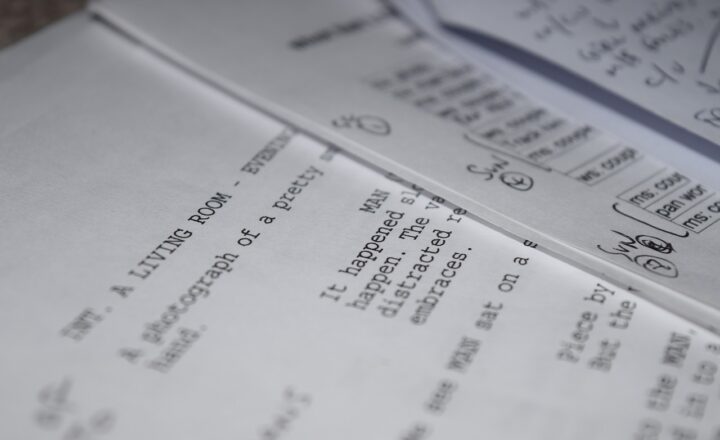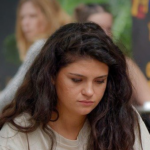The Chilling Stories Behind the Most Iconic Horror Movie Villains of All Time
November 17, 2024

Horror films have a unique way of gripping the audience, immersing them in a world of suspense and terror. At the heart of these films often lie unforgettable villains who elevate the dread to ghastly heights. From supernatural entities to human psychopaths, these characters embody our deepest fears, becoming symbols of horror that resonate across generations.
In this article, we’ll explore the chilling stories behind some of the most iconic horror movie villains of all time, uncovering what makes them so terrifying and compelling.
1. Dracula: The Timeless Vampire
No conversation about horror movie villains is complete without mentioning Count Dracula. Based on Bram Stoker’s 1897 novel, Dracula represents the archetype of the vampire who preys on innocence. The allure of Dracula lies in his dual nature—charming yet predatory.
The character has evolved from the early adaptations featuring actors like Bela Lugosi to modern interpretations showcased in films like “What We Do in the Shadows”. The essence of Dracula’s power stems from his immortality, his charming seduction of his victims, and his sinister thirst for blood, reflecting society’s deepest fears about lust, mortality, and the unknown.
2. Michael Myers: The Unrelenting Killer
From John Carpenter’s 1978 film “Halloween” comes Michael Myers, a character that embodies pure evil. With his blank expressionless mask and relentless pursuit of his victims, Myers leaves an indelible mark on the genre.
What makes Myers so horrifying is not just his capacity for violence, but the mystery behind his actions. He represents the unpredictability of human psychopathy and the fear of the unknown, lurking in the shadows, waiting to strike. Over the years, the character has become synonymous with slasher films, and his legacy continues in current adaptations, reminding audiences that evil can wear a familiar face.
3. Freddy Krueger: The Haunting Dream Demon
“A Nightmare on Elm Street” introduced audiences to Freddy Krueger, a disfigured dream-dwelling killer who haunts the teenagers of Elm Street as they sleep. His unique ability to kill his victims in their dreams makes him an unprecedented threat—where one should feel safe, he lurks.
Freddy’s backstory is equally haunting: as a child murderer, he represents the fear of the familiar turning into horror. His iconic glove with serrated blades is an image that chills the spine, while his snarky one-liners add a sinister allure, making him one of the most recognizable figures in horror. His character explores themes of trauma and revenge, resonating with audiences long after the credits roll.
4. Jason Voorhees: The Unstoppable Juggernaut
Jason Voorhees from the “Friday the 13th” franchise is yet another emblematic figure of horror. Beginning as a tragic character who drowned as a child due to negligence, he returns as a masked killer hell-bent on avenging his mother’s death. His strategy of hunting down unsuspecting campers enhances the idea of nature being a place of danger rather than escape.
Jason’s lack of speech and overwhelming physical presence—armed with his signature machete—makes him an almost supernatural figure, sparking fear and fascination. The gruesome creativity of his kills has cemented his status within the slasher genre, leading to numerous sequels and a place in pop culture.
5. The Ghost Face Killer: The Chameleon
In “Scream,” the Ghost Face Killer embodies the self-awareness of the horror genre itself. This character is unique in that the identity of Ghost Face changes with every film, often reflecting the fears and follies of contemporary society. With a mask and robe reminiscent of Edvard Munch’s painting “The Scream”, this villain represents the blend of mystery and meta-commentary that defines modern horror.
Ghost Face emphasizes the fear of what lies behind our screens and the dangers of social media and fame, making the character highly relevant to today’s audience. His usage of horror movie trivia to manipulate victims adds a clever twist to the archetype of a slasher villain.
6. Pennywise: The Dancing Clown
Stephen King’s “It” brought forth the iconic figure of Pennywise the Clown, a horrific manifestation of childhood fears. By transforming into what his victims fear the most, Pennywise plays with the mind, showcasing the psychological aspect of horror.
The juxtaposition of a clown—a figure often associated with joy and entertainment—with the horror Pennywise brings creates a multifaceted character that captivates both children and adults. The haunting imagery from its adaptations has earned this character a terrifying place in the horror canon. Pennywise represents the loss of innocence and the primal fears we cannot escape.
7. Norman Bates: The Complex Psyche
Alfred Hitchcock’s “Psycho” introduced audiences to Norman Bates, one of the most psychologically nuanced villains in horror. Bates embodies the struggle between sanity and madness influenced by a traumatic relationship with his mother. His blend of charm and instability generates a deeply unsettling viewer experience.
As a character, Bates raises questions about identity and duality in human nature. His notorious transformation in the shower scene remains one of the most iconic moments in film history, marking him as a pivotal figure in the horror genre. The chilling reality of a normal facade hiding a fractured psyche resonates with audiences long after watching.
8. Leatherface: The Brutal Realism
“The Texas Chainsaw Massacre” introduced Leatherface, a character who brings the horror of reality into stark framing. Unlike supernatural entities, Leatherface is a product of his environment—a reflection of the brutality that can exist within families and communities. His reliance on chainsaws and meat cleavers symbolizes the visceral horror of human capability for violence.
Leatherface’s backstory illustrates the dynamics of familial dysfunction and mental illness, blurring the lines between victim and villain, which adds to the complexity of his character. This realism has left an enduring mark on the horror genre, reinforcing the idea that the most terrifying threats often stem from humanity.
Conclusion: The Enduring Fear of Horror Villains
The horror movie villains discussed demonstrate that fear takes many forms, from the supernatural to the psychological. Each character invites viewers to confront their fears and uncertainties, often reflecting social anxieties prevalent at the time of their creation. As horror evolves, these iconic villains continue to resonate, reminding audiences that while the forms of fear may change, the essence of terror remains timeless.
In exploring their stories, we not only understand the roots of our fears but also acknowledge the artistry behind crafting these chilling figures that haunt our screens and imagination. They remind us that in the safety of our homes, darkness can still lurk—not just in the shadows but also in the minds of those who can create such memorable terror.






